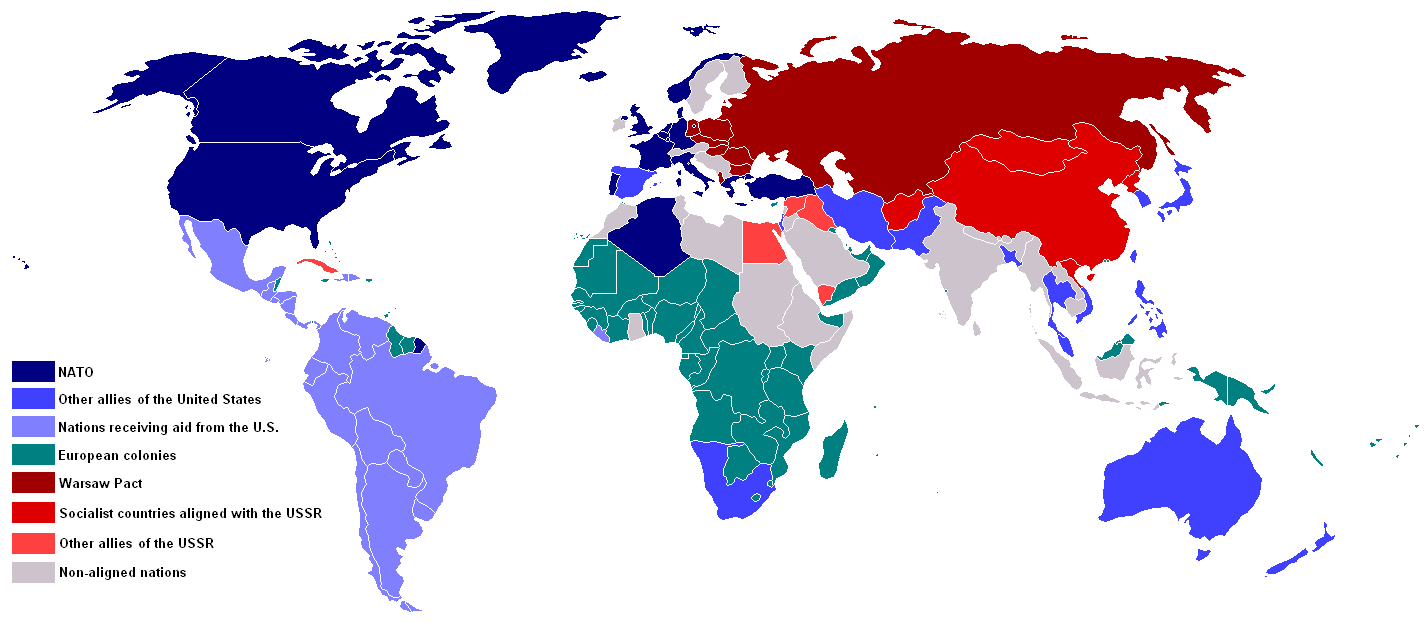
Cold War Map, 1959
Topics on the Page
Key Primary Sources
- Sources of Soviet Conduct
- NSC-68
- Senate Resolution 116
- Two Worlds Speech
- The Long Telegram
- Chance for Peace Speech
The Containment Policy
Soviet and American Political and Economic Systems
The Truman Doctrine
The Marshall Plan
NATO
- Van Cilburn's Impact on the Cold War
The Red Scare, the Lavender Scare and McCarthyism
Women's Roles
- Women Propagandists
- Elena Lagadinova, Soviet Women's Rights Advocate
Civil Defense and the Duck and Cover Propaganda Film
Focus Question:
What factors contributed to the Cold War and what was the policy of containment?
U.S. Navy patrol flying over a Soviet freighter, Cuban Missile Crisis, October 1962
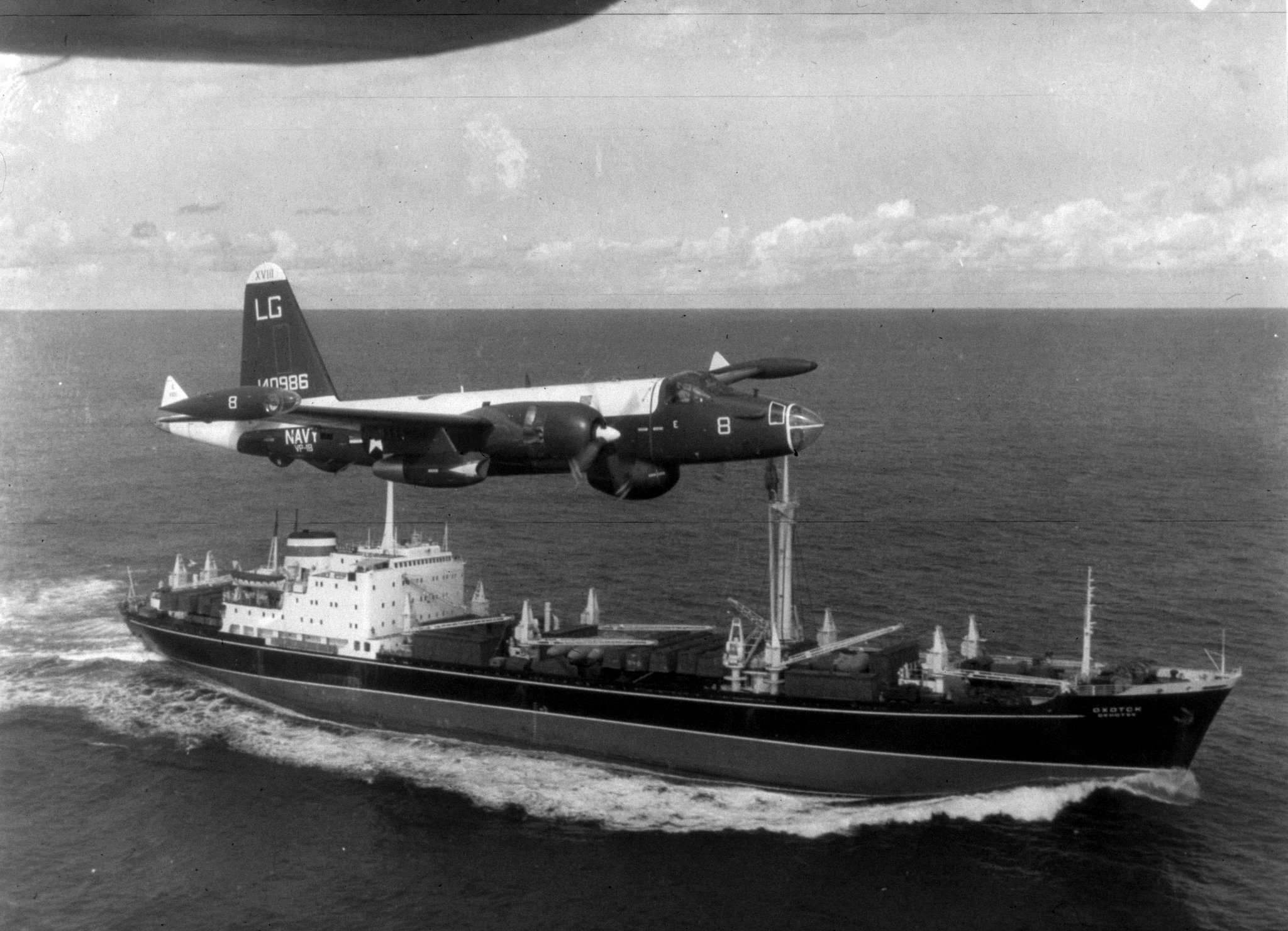
 Cross-Links:
Cross-Links:
AP US History Key Concept 8.1: The US and the Cold War
Key Events of the Cold War
Sources of Cold War Conflict
Key Events of the Cold War
Cold War Differences between the US and the USSR
 Key Primary Sources
Key Primary Sources
Chance for Peace Speech, Dwight Eisenhower (April 16, 1953).
 For a documentary clip about the beginning of the Cold War, see From World War to Cold War
For a documentary clip about the beginning of the Cold War, see From World War to Cold War
Click here for a timeline of American society during the Cold War
For a video on the Cold War by Crash Course see USA vs USSR Fight! The Cold War: Crash Course World History
Click here to access the Complete Oxford Handbook of the Cold War.
Brief video covering many of these topics!
Containment
The policy of Containment was the hallmark of America's response to the Soviet Union during the Cold War.
- Containment was an approach set forth by George Kennan, and as described by historian Mark Atwood Lawrence, it urged that the U. S. should avoid direct confrontations with the Soviet Union, seeking instead to frustrate Soviet intentions by "opposing Communists wherever they threatened to expand their influence beyond their borders."
- “long-term, patient but firm and vigilant containment of Russian expansive tendencies” Kennan from Sources of Soviet Conduct
- Such a policy, Kennan believed, "would cause the Soviet system to mellow and then collapse" ("Friends, Not Allies," Mark Atwood Lawrence, The New York Times Book Review, September 13, 2009).
For more on George Kennan, see a book review written by Henry Kissinger of historian John Lewis Gaddis' biography, George F. Kennan: An American Life.
The Long Telegram
 Learning Plans
Learning Plans
- Click here for a unit plan on the origins of the Cold War, 1945-1949
- Click here for a Prezi presentation on the factors that contributed to the start of the Cold War
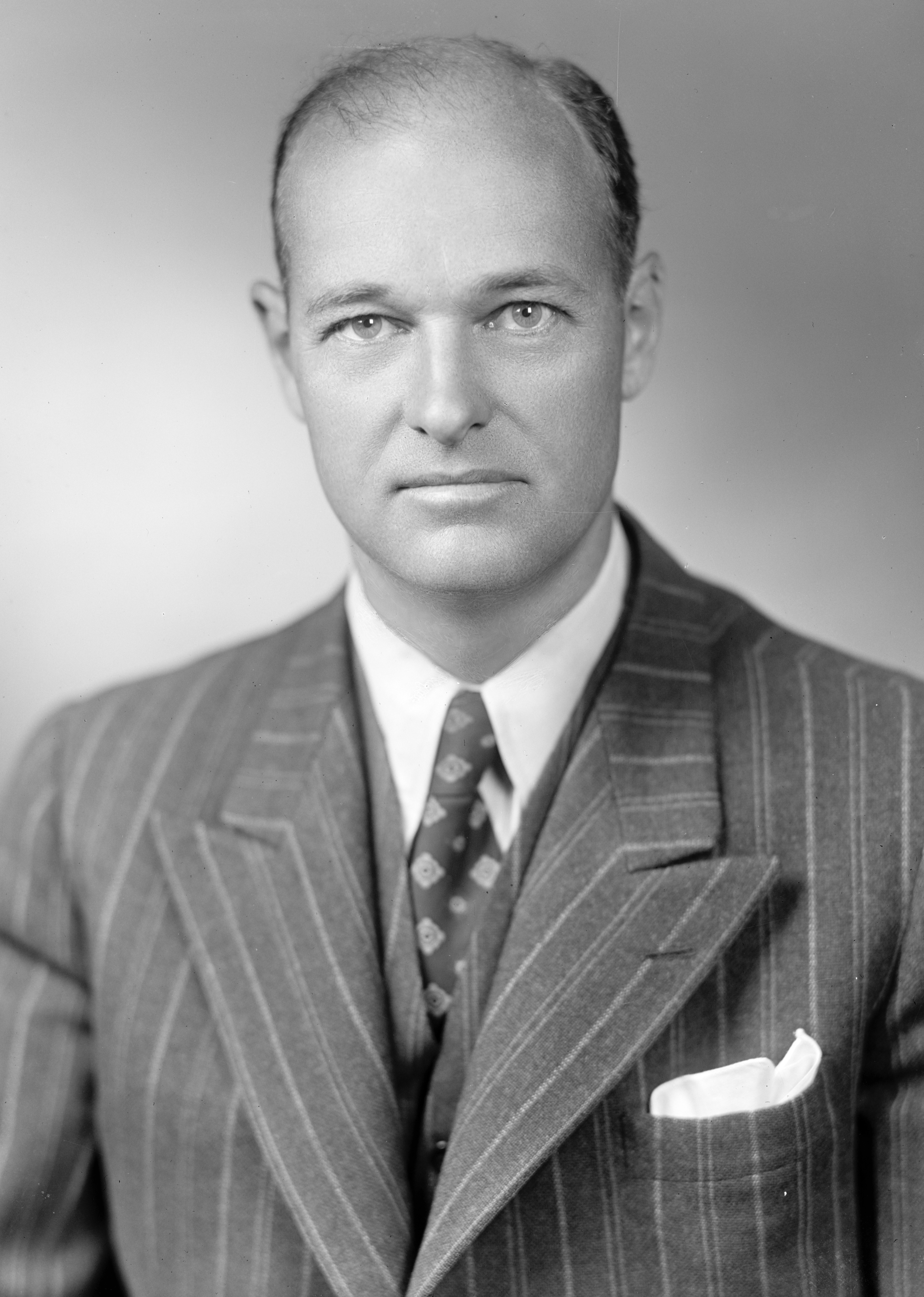 |
| George F. Kennan, 1947 |
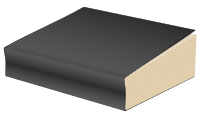 To read more about George Kennan and Paul Nitze, the policy figures who stood at the opposite end of the foreign policy spectrum, see The Hawk and the Dove: Paul Nitze, George Kennan and the History of the Cold War by Nicholas Thompson (Henry Holt & Company, 2009). Nitze believed that the United States needed to maintain overwhelming military superiority to deter attack or win a war between the two superpowers.
To read more about George Kennan and Paul Nitze, the policy figures who stood at the opposite end of the foreign policy spectrum, see The Hawk and the Dove: Paul Nitze, George Kennan and the History of the Cold War by Nicholas Thompson (Henry Holt & Company, 2009). Nitze believed that the United States needed to maintain overwhelming military superiority to deter attack or win a war between the two superpowers.
Click here for the transcript of a 1996 interview with George Kennan by David Gergen on the PBS Newshour program.
A. the differences between the Soviet and American political and economic systems
Nikita Khrushchev and John F. Kennedy (1961)
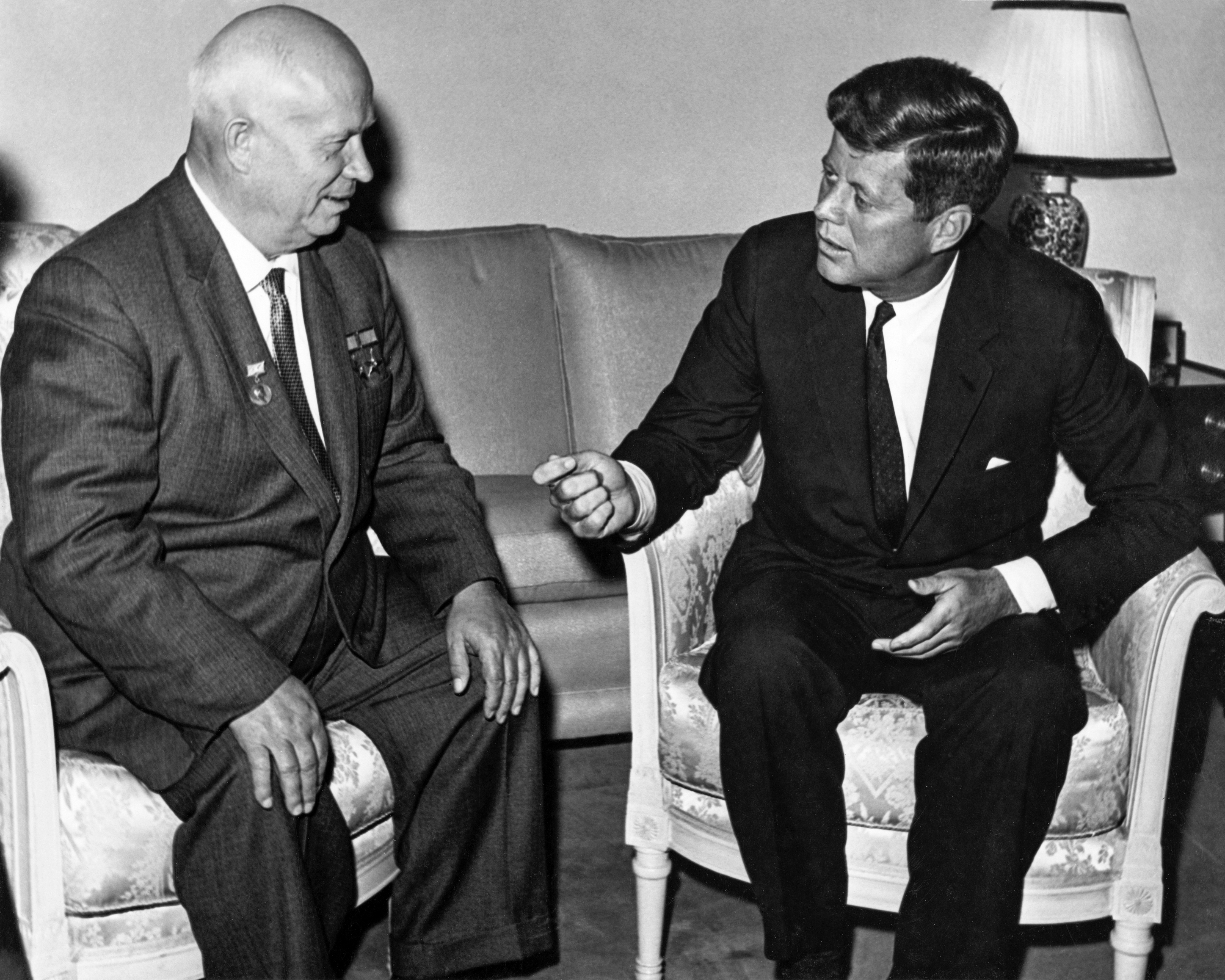
The Soviet Union was communist.
There was a complete control over all economic, social and political parts of life.
-
USSR
-
New state: Formed in 1917 after a revolution
-
One party system
-
All parties that were not the Communist Party(CP) were banned
-
Had elections for lesser offices, such as the Soviet of the Union and Soviet of the Republics with only one candidate
-
Soviet of the Union and Soviet of the Republic like US congressional bodies but lack power
-
The true power lay in the hands of the Premier who was the autocrat
-
In this era led by Stalin, Malenkov (briefly), Bulganin (also briefly), Khrushchev, Brezhnev, Adropov(briefly), Chernenko (even more briefly, known as the “living corpse”), Gorbachev
- The United States had and currently has a democratic-republic. This means that the people have most of the power to control economic, social, and political parts of life.
-
Vote for Government offices, system of multiple parties, primarily Republicans and Democrats
-
President is elected and is not necessarily the Party Leader
Click here for a look at the relationship between the Soviet Union and United States
 Learning Plans
Learning Plans
- Click here for a lesson plan and information on Soviet Communism
- Click here for teaching resource on Communism
 Click here for an Anti-Communist cartoon, and here for a cartoon explaining and defending Capitalism, on YouTube
Click here for an Anti-Communist cartoon, and here for a cartoon explaining and defending Capitalism, on YouTube
B. Soviet aggression in Eastern Europe
Following World War II the Soviets looked to aid in the spread of communism.
- The United States in contrast sought to put down the expansion of communism and promote a less totalitarian system. During the Cold War many countries became communist.
 |
|
Countries with a communist government.
Dark red means communism began in the 1920s and 1930s
Red means 1940s and 1950s
Light red means 1960s and 1970s
|
The Truman Doctrine
In 1947, President Truman made a speech before Congress in response to the British ending military and economic support for Greece during their civil war.
- In the speech, he asked Congress to support Greece and Turkey in their fights to prevent Communism from overtaking their countries.
- This was the basis of the Truman Doctrine, which stated that the United States would support democratic countries politically, economically, and militarily when they are threatened by an authoritarian force.
- This was a drastic change from the previous US policy of withdrawal and isolation to the open possibility of involvement in other countries' affairs.
- The Marshall Plan prevented the US from having a weakened economy, contained the Soviet Union, and prevented conflict during the rebuilding of Europe.
- Click here for more on the Truman Doctrine
Click here for an engaging lesson plan on the Truman Doctrine from the Harry S. Truman Presidential Library.
Click here for the text of the The Truman Doctrine (1947)
Click here for the audio video of The Truman Doctrine
Click here to see a short film about the ideological differences between Stalin and Truman. Also, this page links to more movies on the topic of the Cold War.
Marshall Plan Poster, 1947
The Marshall Plan

The Marshall Plan was created by Secretary of State George Marshall. He announced the plan during a speech at Harvard in 1947. Marshall's plan included about $13 billion to help Europe recover from war. This $13 billion was for food, fuel, machinery, and other necessities. The countries that accepted the aid were expected to become American allies, so the Soviet Union and countries under its influence denied the aid.
Here to examine the Marshall Plan using primary sources
Here to read a speech by Charles Vursell opposing the Marshall Plan, 1947
Here for the text of the Marshall Plan speech and other primary source resources
Online exhibit from the Library of Congress "For European Recovery: The Fiftieth Anniversary of the Marshall Plan.
"Watch a Cold War cartoon here!
Here for the Marshall Plan section of the George C. Marshall Foundation website. This section includes the history of the Marshall Plan, the drafting, original text, and responses to the speech, posters about the Marshall Plan, and other information pertaining to the Plan
NATO
The North Atlantic Treaty Organization was created in 1949.
- It was started by the United States, Canada, the UK, France, and a number of other European countries.
- It was created to prevent the Soviet Union from gaining power and influence.
- These countries pledged to defend any member country from an attack by the Soviets.
- Today 26 countries are signed with NATO.
- Click here to read a history of NATO from 1949-1952.
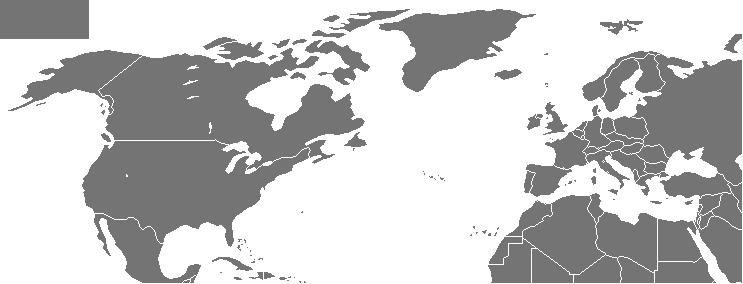 |
| NATO member timeline. Dark blue means original member, light blue means new member |
Click here to read the treaty that established NATO
Click here for a timeline of NATO
Read up on how NATO is involved in the world today.
- Click here for the lesson plan "The Role of NATO"
- Click here for the lesson plan "From the Marshall Plan to NATO"
Warsaw Pact:
-
Similar to NATO the Warsaw Pact was a treaty between several communist countries in Eastern Europe that allowed Soviet troops to be place in them.
- Also enabled the USSR to apply influence in the international spheres of government as it supported Warsaw Pact Countries.
-
Allowed for Soviets to use military pressure to keep the regimes of Warsaw Pact countries intact and following orders from the CP
-
When the Soviet Union Collapsed in 1991 all of the members, except Russia, joined NATO
https://www.britannica.com/event/Warsaw-Pact
Van Cliburn, 1966

 Impact of Van Cliburn on the Cold War
Impact of Van Cliburn on the Cold War
Van Cliburn became a classical music star after winning the International Tchaikovsky Competition in Moscow in 1958.
He died in 2013. Van Cliburn was called the "American sputnik" in the ways that he raised American prestige at the height of the Cold War.
For an overview, see Van Cliburn from The Economist magazine, March 9, 2013.
Van Cliburn is seen performing in this video of the Tchaikovsky Competition
.png) Click here for a biography from the Van Cliburn Foundation
Click here for a biography from the Van Cliburn Foundation
The Red Scare and McCarthyism
 As tensions rose during the Cold War, the fear of Communism spreading throughout America rose to extreme heights. Senator Joseph McCarthy used this fear to his advantage.
As tensions rose during the Cold War, the fear of Communism spreading throughout America rose to extreme heights. Senator Joseph McCarthy used this fear to his advantage.
McCarthy claimed that Communists had infiltrated the US Government, and that he had a list of known Communists working within the State Department. He leveraged this information as a way to gain power, and his fear mongering led to the arrests of several people he claimed were Communists, but in reality simply held more left-leaning views.
For an example of Propaganda during the Cold War:
How to Spot a Communist
For a brief overview of the Red Scare:
Sound Smart: The Red Scare | History
 Senate Resolution 116, introduced by Sen. Joseph McCarthy to Dept. of Foreign Affairs
Senate Resolution 116, introduced by Sen. Joseph McCarthy to Dept. of Foreign Affairs
- Introduced by Senator McCarthy during the Cold War. In this Resolution submitted to the Department of Foreign Affairs, McCarthy writes about the dangers of the spread of Communism, and his belief that the goal of the United States is to protect itself from Communism, as well as free the Eastern European countries who have been “enslaved” by Communism.
- An important document to have access to, as it highlights the mindset of many during the Cold War.
 Executive Order 10450
Executive Order 10450
Executive Orders | National Archives
- Executive Order 10450, an executive order that was made during the “Lavender Scare”, which occurred at a similar time as the Red Scare. The Lavender Scare was the growing fear in America of the spread of LGBTQ individuals.
- LGBTQ individuals, like many others who were counter to the predominant culture in America, were falsely claimed to be associated with the Communist Party.
- With the passing of Executive Order 10450, approx. 5,000 government employees were fired and publicly outed as gay. This is important to discuss, as the fear of Communism grew, many people suffered because of the growing fear.
.png) CROSS-LINK: The Lavender Scare
CROSS-LINK: The Lavender Scare
Women's Roles
Clandestine Women: Spies in American History/Cold War from National Women's History Museum
Go here to read about Women Organizing Transnationally: The Committee of Correspondence, 1952-1967.
- This organization was directly funded by the United States Central Intelligence Agency during the cold war in an imperialist effort to persuade women around the world to adopt U.S. capitalist practices as opposed to communist practices.
- You can read more about the Committee through a synopsis and critique of the book Cold War Women: The International Activities of American Women's Organizations by Helen Laville by clicking here
Women in the USSR
Elena Lagadinova
Click here to read about Elena Lagadinova, a Bulgarian scientist who wrote a critical letter to her communist president who responded by making her "First Secretary of the Fatherland Front and President of the Women's Committee"
- Lagadinova's successful efforts in maintaining and supporting women's rights in Bulgaria pushed the United States to reform their political and social systems to reflect one that was more inclusive of women to prevent western women from being enticed by socialism or communism.
Civil Defense and the Duck and Cover Propaganda Film
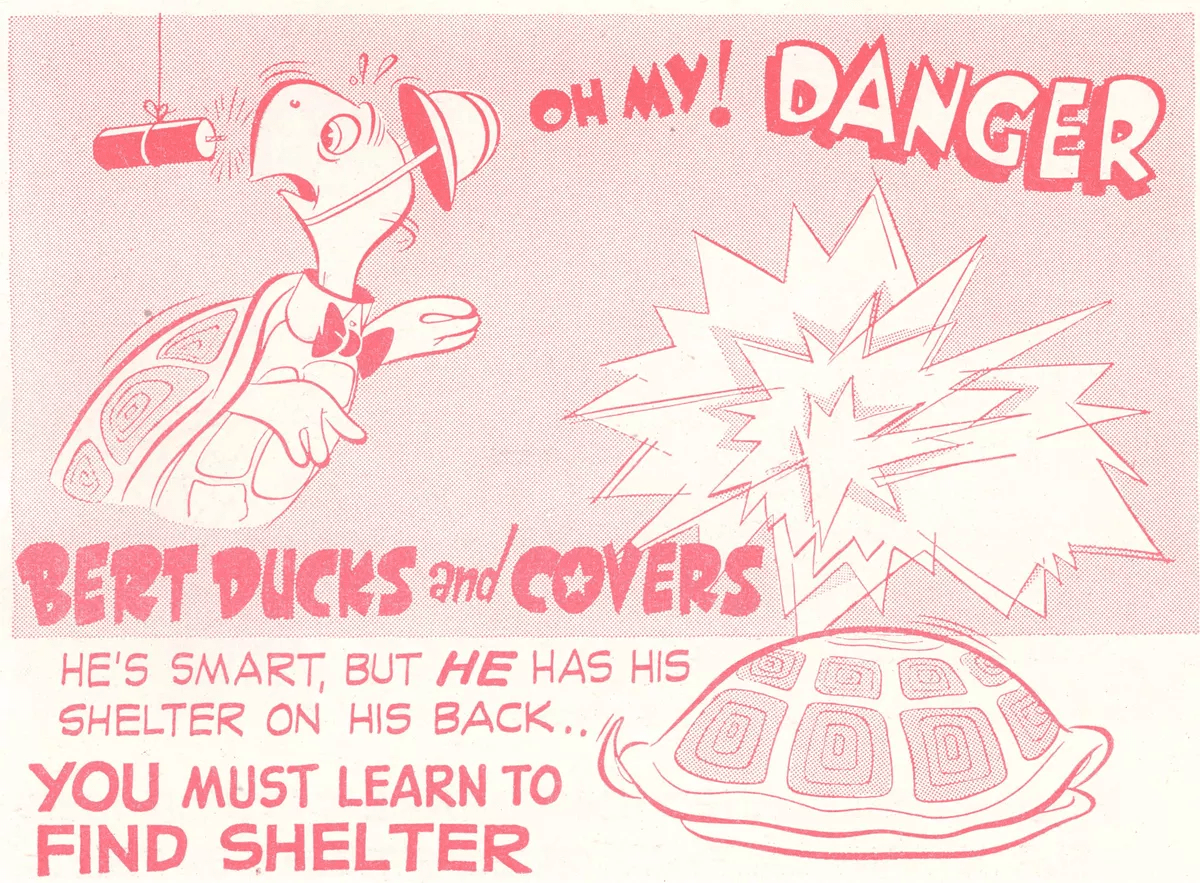
Click here to see Duck and Cover, an educational film featuring Bert the Turtle teaching adults and children what to do in case of an atomic attack.
The ‘Duck and Cover’ propaganda movie was probably one of the most famous of all the pieces of propaganda during the early stages of the cold war.
It was targeted at school children and was intended to install the constant fear of a nuclear attack from the Soviets.
Comments (0)
You don't have permission to comment on this page.